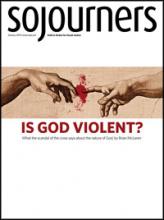Apocalypses generate mixed reactions in our culture. They sell briskly at the box office. They are cathartic. They are foundational to the gospel and to Christian hope.
But they also feel dangerous and unsettling. They seem to feed a politics of certainty, triumph, fear, and exclusion. Many of us suspect our biblical apocalypses are harmfully radioactive. If we handle them at all, we put on gloves, and find it impossible to turn the pages.
What's really there? What are these ancient apocalypses?
Apocalypse is, first of all, a genre, or way of writing, that aims to convey a way of seeing. The first apocalypses asked their readers to open their eyes and see the world in a new light. They were actively resisting other ways of seeing. They offered images, symbols, and stories to combat the story and spectacle of empire.
In the ancient world empire was a transnational apparatus for the redistribution of wealth from poor to rich, from rural to urban, from subjugated nations to the imperial seat. Conquest was its engine, leaving death, shame, and fear in its wake. Conquered peoples yielded up tribute, land, and labor.
Empires claimed the power to order the world. They ruled by force. They also ruled by the stories they told. They marked their power on people’s bodies. Structures of domination and subjugation were encoded in social interactions, gestures, and scripts. Through stories, myths, and symbols and through the habits and practices they shaped, empires could assert their rule as given, as the necessary and natural order knit into the fabric of time, space, and human life.
Read the Full Article
